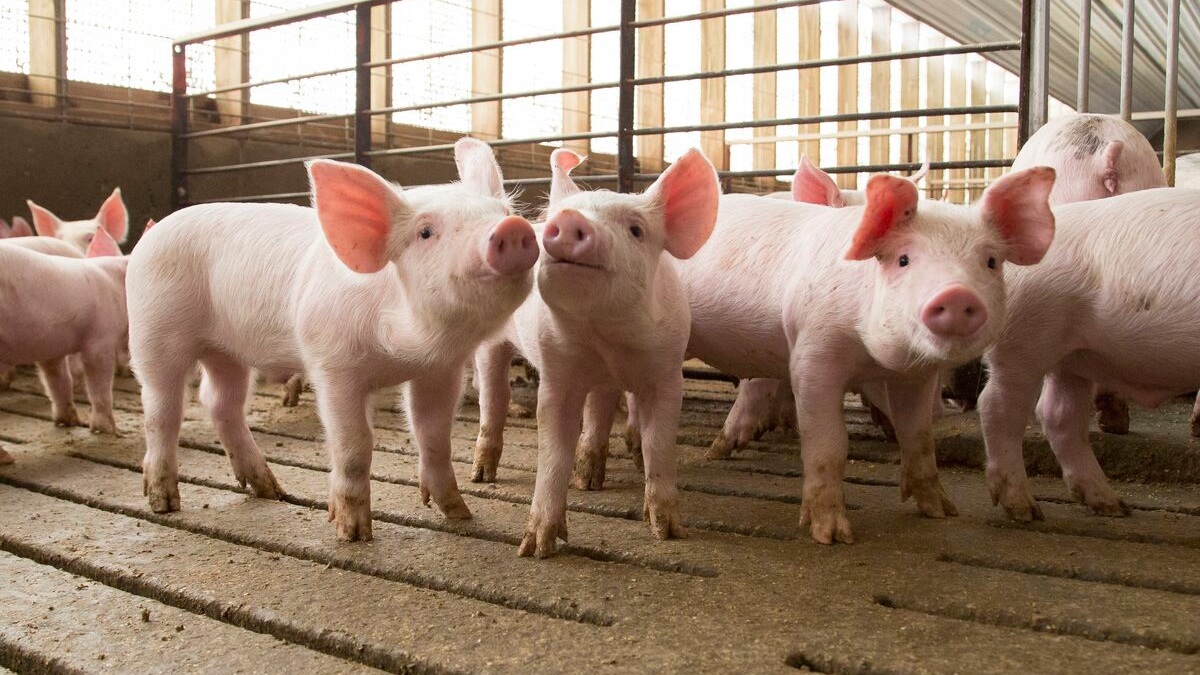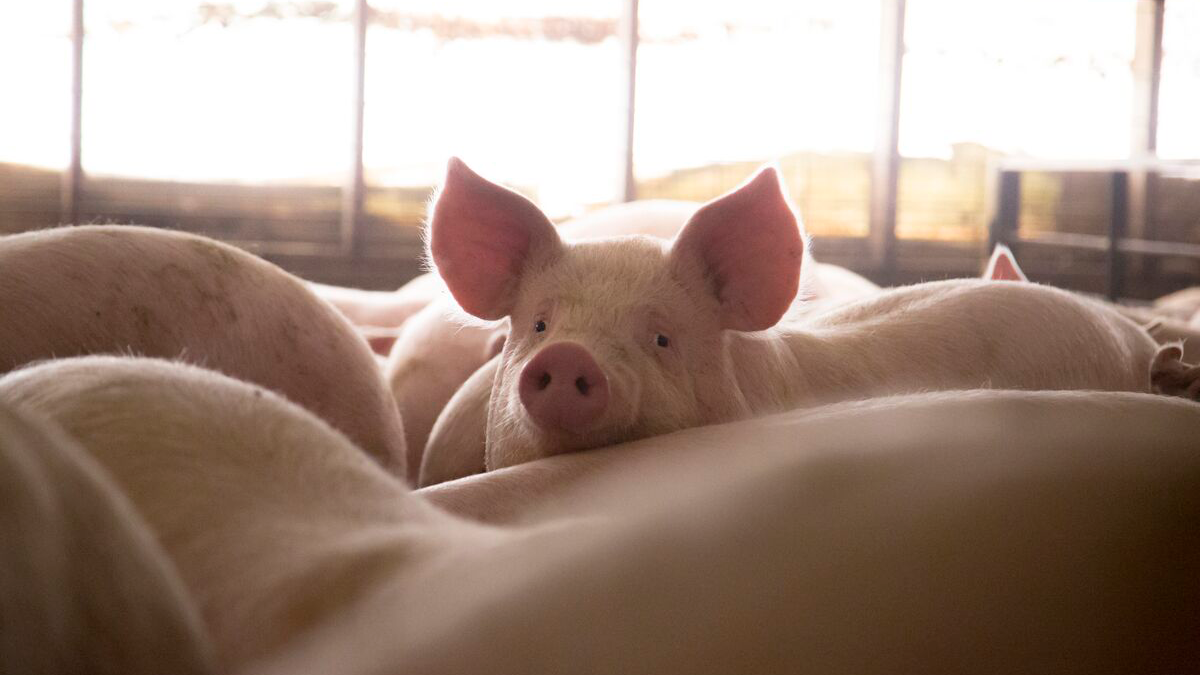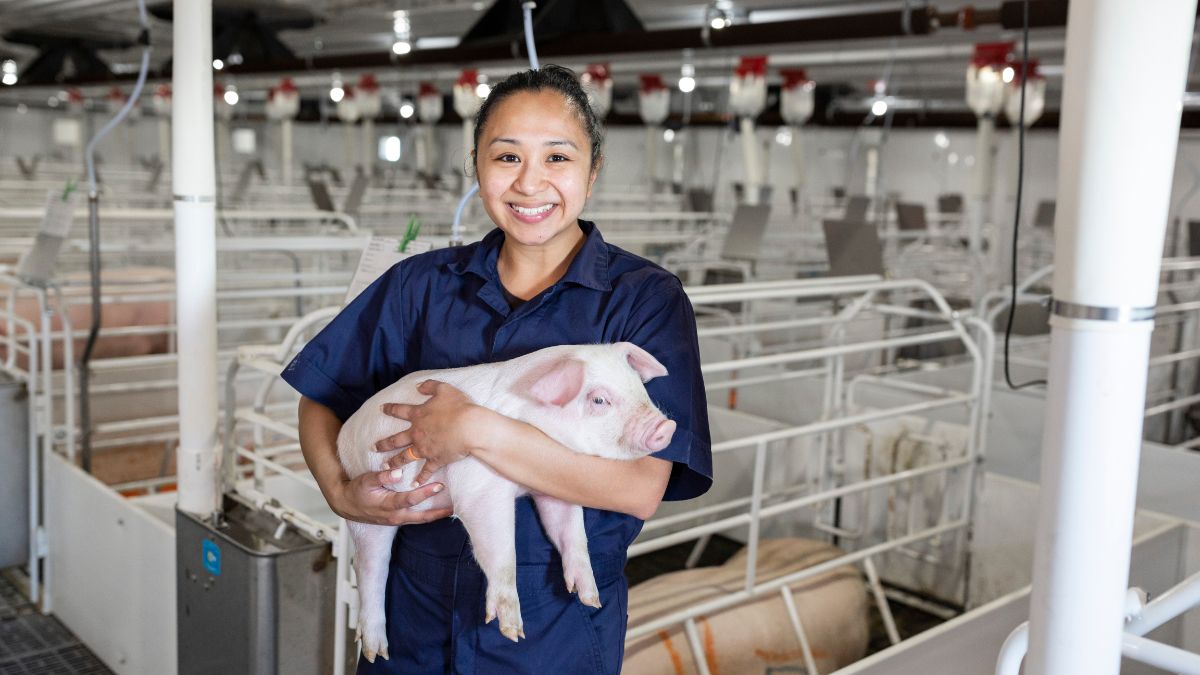World Pork Expo panel led by Dr. Mark Lyons explores strategies for using technology to transform challenges into opportunities
Sustainability, animal health and technology took center stage last week at World Pork Expo in Des Moines, Iowa, the largest pork-specific trade show in the world. Hosted by the National Pork Producers Council (NPPC), World Pork Expo is a hub for groundbreaking innovations in pork production, unique networking opportunities and immersive education.
Free educational seminars covering all aspects of the pork industry are a cornerstone of the three-day event, which typically attracts up to 10,000 pork producers and agriculture professionals each year. The seminars are designed to help “attendees take their operations to the next level,” said NPPC board president Scott Hays.
A panel discussion led by Dr. Mark Lyons, president and CEO of Alltech, explored strategies for transforming obstacles into opportunities.
In “Turning Agriculture’s Toughest Challenges Into Our Biggest Opportunities,” Dr. Lyons and his guests highlighted the role of digital technology in animal agriculture — including sensors, artificial intelligence and cloud-based programs — and identified approaches for creating environmental and economic sustainability amid labor shortages and profitability and pig health challenges.

The current landscape of digital technology in agriculture
Artificial intelligence (AI) and on-farm sensors are increasingly being used in the field to monitor animal health and productivity. They can provide real-time access to crucial livestock insights and allow proactive management practices and the early detection of potential health issues, which can lead to enhanced efficiency on the farm. There is a gap, however, in the infrastructure required to fully implement these technologies and bring these advantages to the producer, said B.J. Brugman, co-founder and CEO of a precision livestock farming company called Distynct.
When he founded the company, he wanted to identify and count animals on-farm so producers could get real-time visibility of their facilities.
“What we found was a complete lack of infrastructure when we got out to the market,” Brugman said. “That forced our business to change. I think the reality of the pork business hit us in the face, where you can win pitch competitions, but when you get it out to the farm, there’s no internet [access].”
New technology must not only get everyone in the room excited, but it also needs to have a practical application. Starting with infrastructure improvements will ease the friction of adopting new technologies, he said.
In cases where infrastructure and connectivity are available, digital technology can make a big difference in monitoring animal health and eradicating diseases. That only works, however, if most farmers are OK with sharing their on-farm data, said Dale Stevermer, co-owner of Trails End Farm in Minnesota and a member of the board of directors for the National Pork Board.
“The National Pork Board really didn't go in this to be a software company at all, but we ended up developing a very powerful piece of software that all producers can use to be able to record movements of animals, site to site and then site to market,” Stevermer said. “And the most important reason for this is in case of a foreign animal disease outbreak — that data will be able to be submitted right to the appropriate animal health organization at your state.”
Livestock producers have a lot to deal with when it comes to a disease outbreak. Monitoring and reporting software can help facilitate the essential next steps.
“If the state veterinarians have the information at their fingertips, and the combination of all the farms at that point and all the movements in that area, they get a lot better sense of what has happened,” Stevermer said.

A vision for the future of on-farm technology
Over the next five years, “I envision [that] we’ll be able to take data from the farm all the way through processing and report it regionally,” said Jamie Burr, chief sustainability officer of the National Pork Board.
Then, consumers will know in which region of the country their pork originated, as well as its social and environmental footprint, he said.
Brad Priest, wean-to-finish manager at TriOak Foods, a pork production, feed manufacturer and grain marketer that serves Iowa and Illinois, said he thinks the use of GPS to track movement will have a tremendous impact on livestock performance.
Brugman envisions a future where everything on-farm is connected digitally.
“I think it’s so exciting to think about laying that groundwork, like laying the infrastructure right now to rapidly scale and deploy precision technology,” he said.
Microsoft’s recently released Azure Data Manager for Agriculture collects and combines data from various sources on-farm, allowing producers to analyze the information more effectively and more quickly develop precision agriculture solutions, said panelist Riyaz Pishori, principal program manager at Microsoft.
And perhaps five years from now, he said, this data can be communicated to farmers via AI in a conversational way, similar to ChatGPT.
“If a farmer’s knowledge could be augmented with some of the other data [from AI] so that he or she can make a better judgment, it’s probably where we will go,” Pishori said.
Confidence in data privacy — the assurance that an individual farm’s data will not be seen or passed on to others — will motivate and inspire farmers to adopt technology, Burr said.
Farm information is personal, Brugman said, and customers need to be reassured that they are the owners of the data. The role of tech companies is simply to guide their customers in how to use the data to make better decisions, he said.
Balancing technology with user profitability
The ability to make precise decisions on-farm will reduce production costs, Pishori said.
Cost-savings is a driving factor.
Investments in technology are more difficult for smaller producers, Stevermer said, but it is necessary to enhance efficiency, profitability and sustainability.
“I have to do it because every acre of corn that I grow and every acre of soybeans I grow has to produce the most profit possible,” he said. “I have to monitor more closely for that so that I can show that my bottom line, the total dollars, is high enough. It becomes one of those tough balances and it takes it takes a sharp pencil, but it works.”
Pishori acknowledged that some technologies can be expensive and not as accessible right now to smaller farms. However, researchers are finding ways to democratize technology, such as using smart phone applications to determine soil quality or measure carbon in the soil.
Leveraging digital technology for sustainability
Digital technology helps farmers measure their sustainability, both economically and environmentally.
The use of technology has dramatically decreased land-use requirements and decreased water use, Stevermer said.
By harnessing the data captured by We Care, the National Pork Board’s initiative to promote responsible and sustainable pork production, producers have been able to report an 80% reduction in soil erosion, he said. The U.S. pork industry has made significant strides in sustainability over the past 60 years, and the use of technologies has played a major role.
Digital technology can predict sustainability efforts, increase efficiency and allow for continuous improvement.
Pishori and his team are working on creating computer simulation applications for measuring carbon sequestration on-farm that give farmers results from different inputs of activities.
“Our perspective is how do we get that new learning into our hands to apply as fast as possible. And again, it goes back to the digitization of data,” Brugman said.
Streamlining technology is going to be key to getting farmers to take advantage of it, Priest said. Then, we must assist them with scalability.
“There’s still a lot of excitement in the pork industry,” Stevermer said. “We can harness that power now. There is strong potential for what can be done.”
Learn more about technology's potential to transform agriculture. Click here to watch the entire panel discussion.


























